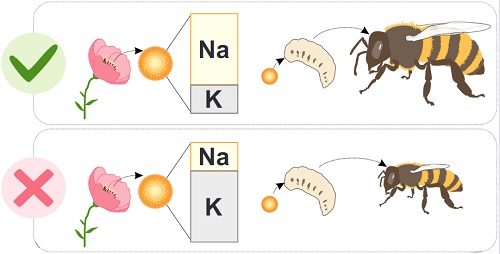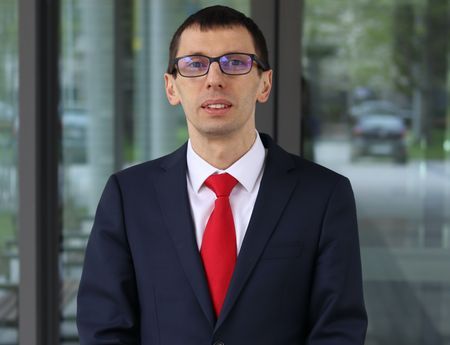
Wild bees are an important part of our environment, though our knowledge about their ecology and evolution is still quite limited. Today, many of their species are at risk of extinction, so understanding the relationship between bees and plants is essential for us to be able to protect them. Dr Michał Filipiak from the JU Faculty of Biology explains the key aspects of the evolution of bees and how this knowledge might be useful to us.
Over the course of their evolution from their carnivorous ancestors, bees needed to deal with the restrictions imposed by switching to a plant-based diet, in which sugar-rich nectar provides energy and pollen is the source of nutrients similar in value to food of animal origin. Both nectar and pollen have one thing in common: a high potassium to sodium ratio (K:Na), which is characteristic of plant-based food. Such proportions can lead to underdevelopment, health problems and even death of bees. This is why the K:Na ratio in food was and still is exceptionally important for more than 20,000 species of bees that are currently alive as well as their ancestors.
The concentration of sodium in plant tissues and products is low. At the same time, sodium is a vital ingredient for herbivorous insects. Meanwhile, potassium plays a crucial role in plant biology and is present in high concentrations in their tissues and products. Excessive consumption of potassium may cause health problems and even death for bees. Hence, striking a balance between potassium and sodium is a key issue when it comes to their well-being.
 Changing their diet from carnivorous to herbivorous had an impact on the bees’ physiology, ecology, nesting strategies and behaviour. The K:Na ratio can be regulated by living organisms both physiologically and behaviourally, for example by drinking suitable water from pools and puddles or ingesting bodily fluids of living or dead animals. These mechanisms affect the way that bees behave and shape the interactions between them and plants. In particular, they influence a crucial element of the natural environment: the cycling of nutrients.
Changing their diet from carnivorous to herbivorous had an impact on the bees’ physiology, ecology, nesting strategies and behaviour. The K:Na ratio can be regulated by living organisms both physiologically and behaviourally, for example by drinking suitable water from pools and puddles or ingesting bodily fluids of living or dead animals. These mechanisms affect the way that bees behave and shape the interactions between them and plants. In particular, they influence a crucial element of the natural environment: the cycling of nutrients.
Plants have a limited access to minerals in the earth, which may lead to the development of particular characteristics related to bee-plant interactions. For instance, plants invest some of the resources they acquire from the soil into the production of pollen and nectar, which is then collected and consumed by bees, while other resources, allocated into leaves and stems, can be eaten by others, like butterflies, moths or beetles. This investment of particular chemical elements into particular tissues is dependent on their interactions with other organisms. Plants can potentially invest the accumulated sodium into certain organs, tissues or products in order to attract or scare off herbivores.
Nectar is somewhat cheap to produce, as it is composed primarily of water and carbohydrates. Conversely, pollen is expensive, since its cells are made up of about 25 chemical elements that are essential for all living organisms. Plants have to acquire these elements from the earth, and some of them can be limited in supply. As a result the relationship between plants and bees is shaped by compromises enforced by the mechanisms of evolution: plants need to choose whether to invest their resources into the production of pollen or into other key biological processes. However, investing sodium is less risky for plants, as it is generally abundant in the environment and they are not as reliant on it as animals.
The question of whether plants regulate the K:Na ratio in pollen and nectar remains unanswered. Nevertheless, answering it would allow us to better understand the biological mechanisms which form the basis of bee-plant interactions. This knowledge is important for effective protection of wild bees. Future research projects should be devoted to analysing the impact of K:Na ratio on the ecology and evolution of bees, which would help us understand their basic needs and relationship to the natural environment, which does not always meet these needs.
Zuzanna M. Filipiak, Jeff Ollerton, Michał Filipiak (2023), Uncovering the significance of the ratio of food K:Na in bee ecology and evolution, Ecology
Image at the top: CC-BY-SA-3.0
Image in the text: Ecology
Original text: www.nauka.uj.edu.pl





